Six-year-old Mao Takeshita was dressed in a heavy kimono, her face painted with a thick layer of white kabuki powder. Before her, hundreds of spectators sat on tatami mats. She stepped forward, following the spotlight and began a dance, introducing herself in the unique style of an ancient play.
Her appearance kicked off the play, and Mao began acting alone. When the new school year began, she was the only first-grader at Damine Elementary School, a mountain village in central Japan. At school, she joined a children's kabuki group. And Mao may well be the last child actor of the traditional art of kabuki in this remote mountain village.
Every year, students here spend months preparing for their roles in an elaborate village play in honor of Kannon. The people of Damine are so devoted to the performance that they often build a makeshift bamboo stage. This enthusiasm has helped keep Damine Elementary School alive while many others across rural Japan have closed for lack of children.
As Damine, like many other Japanese villages, faces an aging population and migration to big cities, this ritual that has lasted for dozens of generations may one day disappear. But not now.
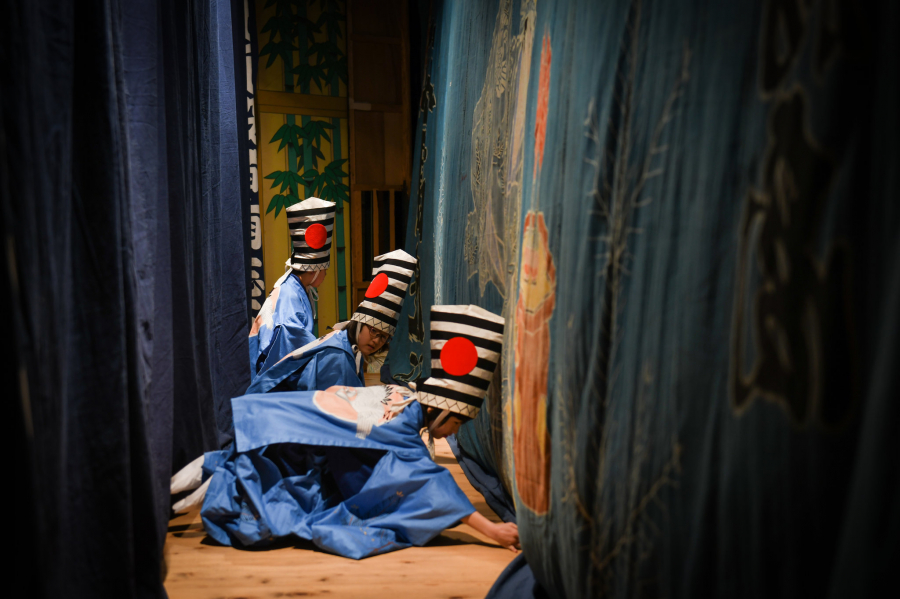
Students at Damine Elementary School wait backstage during a kabuki performance.

Costume tools

Getting ready to go on stage

A student watches the camera filming the performance.
The performance takes place every February. The children enthusiastically apply makeup backstage, then glide through hanamichi (flower paths) and emerge on stage in dramatic fashion, stomping their feet and brandishing swords. The crowd roars with approval, tossing packets full of coins onto a metal tray on stage. The chorus’s chorus, accompanied by the samjo, moves the audience, warming the chilly air in a Japanese countryside far removed from the bustling streets of modern Tokyo or Osaka.
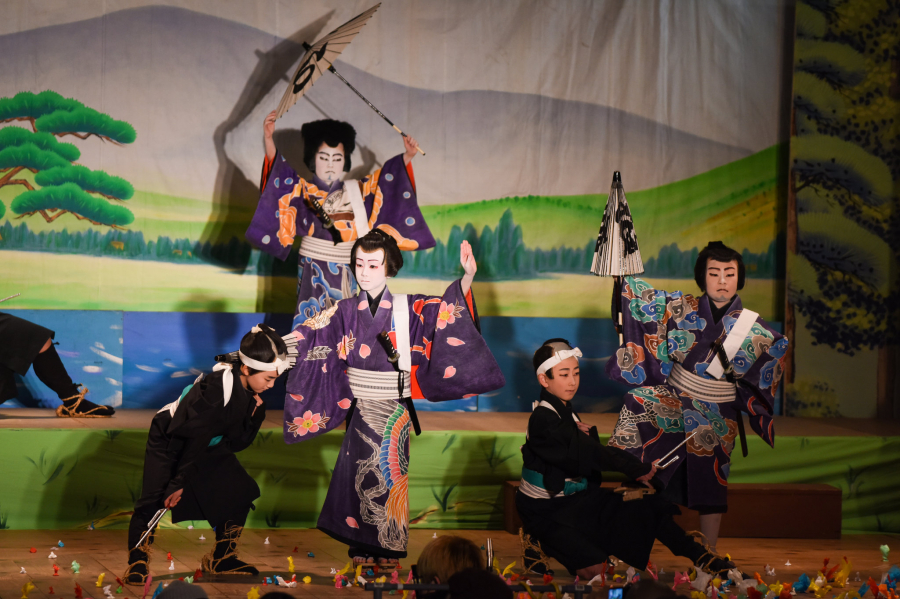
This year, there are 11 child artists performing kabuki.
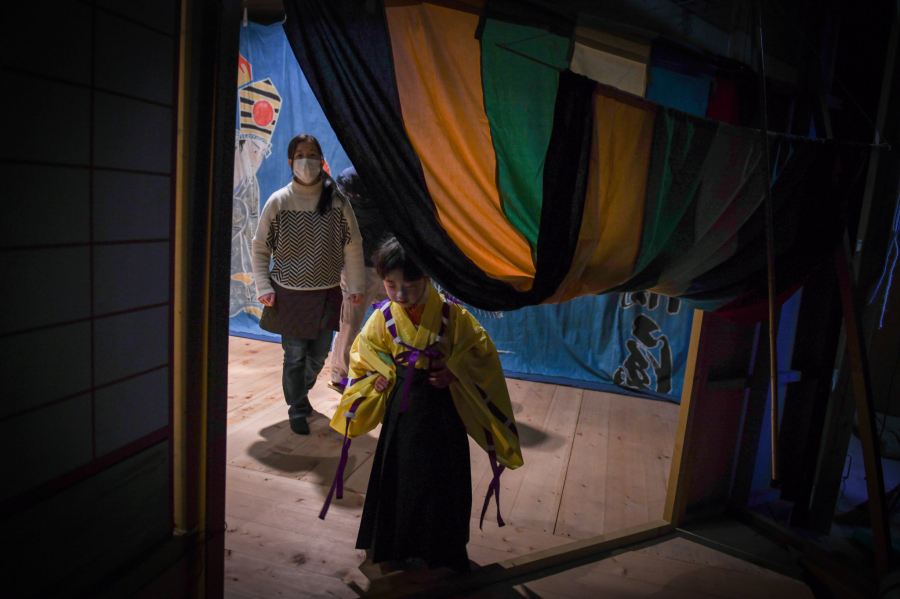
But after Mao enters first grade, the other classes at Damine Elementary School will be empty.
The elaborate rehearsals for the performance were held inside the school, which consisted of an old wooden building with three classrooms, a library and a small auditorium where the children gathered for vocal practice and lunch. Photos hung along the school’s corridors from graduating classes over the past 100 years. It was a story of the decline of tradition, beginning with sober black-and-white shots of groups of students in kimono and ending with color shots of a few children in stiff Western dress, dwarfed by teachers who outnumbered them.
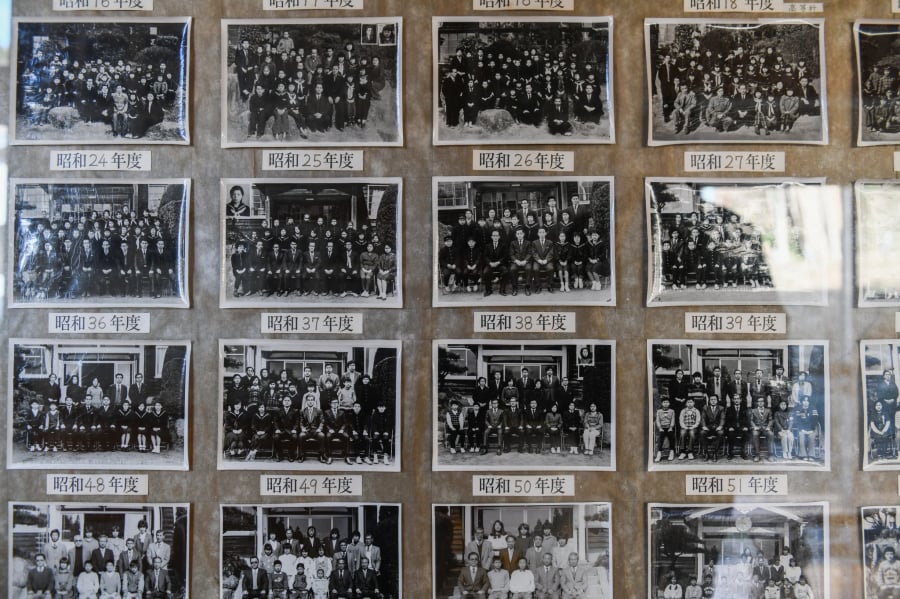
Photos of old graduating classes
The Damine Festival, in some ways a “living fossil,” dates back more than 370 years to the time when Japan was under the harsh rule of the Shogunate. It is one of the few performances still held on makeshift outdoor stages. Kabuki performances have been a tradition in the Chubu region of central Japan, which is not only geographically important but also historically significant. The warlords who attempted to unify the country in the late 16th century all came from this region.
The people of Damine say their festival began with a miracle. The story goes that one summer, a group of people went into the shogun's forest and stole some wood to rebuild the shrine. This was a serious crime. When the shogun sent someone to investigate, the villagers prayed to Kannon to save them, vowing that as long as there were three households in Damine, they would hold a festival in Kannon's honor every year. Then, a freak blizzard prevented the inspector from entering the village, and from then on, the villagers held a kabuki performance every year, even during World War II.

Damine Elementary School
Now, the task of teaching kabuki to children falls to 82-year-old Suzume Ichikawa and several other theater veterans. As a teenager, Ichikawa joined a performing troupe that performed across the country. Decades later, she still teaches students the songs and dances that have become Japan’s most famous tradition.
Ms. Ichikawa believes the Damine festival kabuki performance is the oldest in the region. But she doesn’t know how much longer it can last: not only the children, but also the teachers are disappearing. When Ms. Ichikawa dies, she doesn’t know who will take her place. There’s no one dedicated to kabuki anymore, she says. The children, if there are any, will probably have to learn kabuki by watching videos.

Students return to school in February
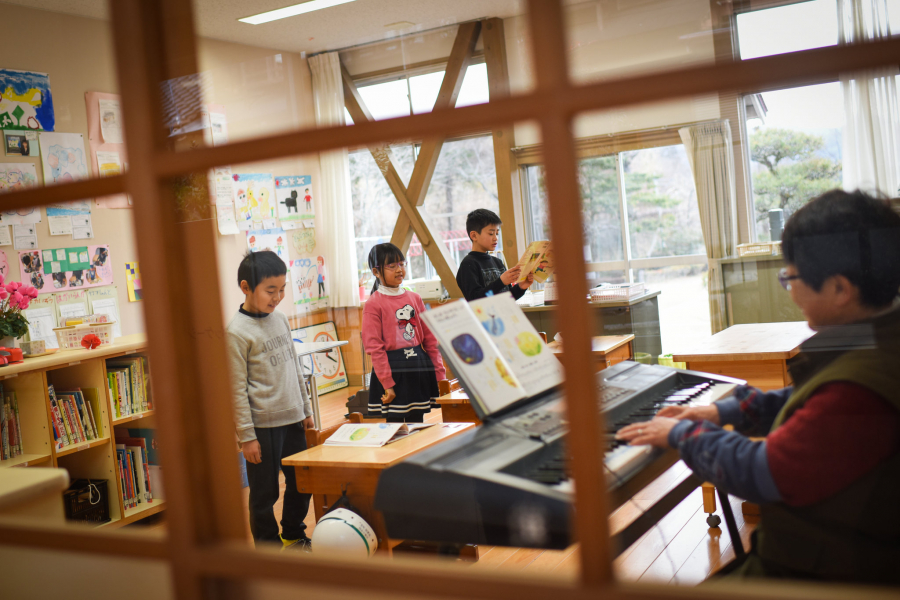
Vocal class
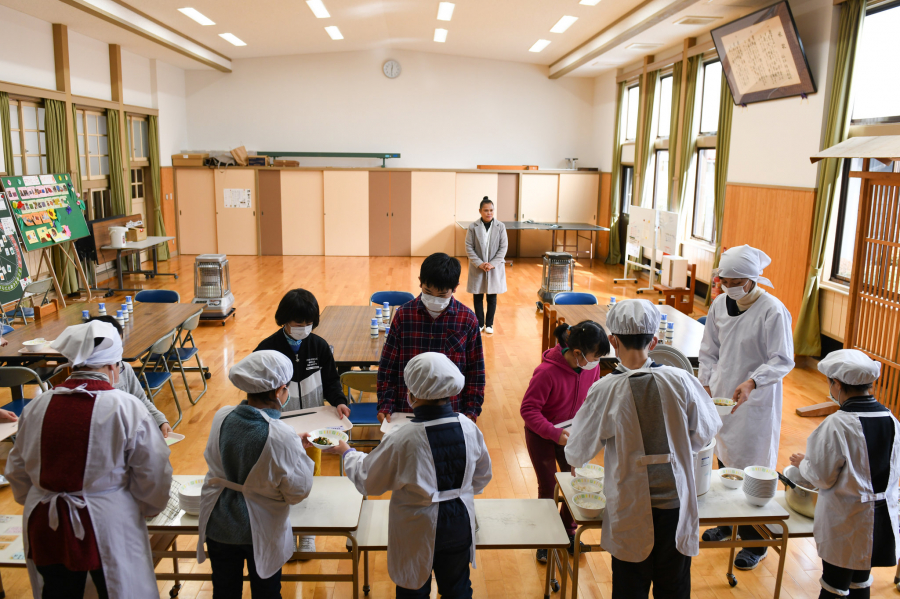
Prepare lunch for students in the gym

Students mop the floor after lunch
While the festival has remained unchanged over the years, Damine Village and Shitara Town have changed a lot. Many of the old-fashioned Japanese inns that lined the main streets have ceased to operate. There used to be a railway that ran along the river and through the mountains, used by loggers during Japan’s postwar reconstruction. The railway closed in the 1960s. Now there is only one bus service from the town to Shinshiro City, about an hour away, but the buses are almost empty. Shitara is also showing signs of decline, despite the government’s heavy investment in the town in an effort to modernize the countryside. The only service industry that has seen real growth in the town is elderly care.
This year, the town plans to begin considering the future of Damine Elementary School. It may be merged with another school nearby. “It’s a difficult issue,” said Masahiro Toyama, head of the education department. “Closing the school would be like tearing apart the soul of the village.”


































